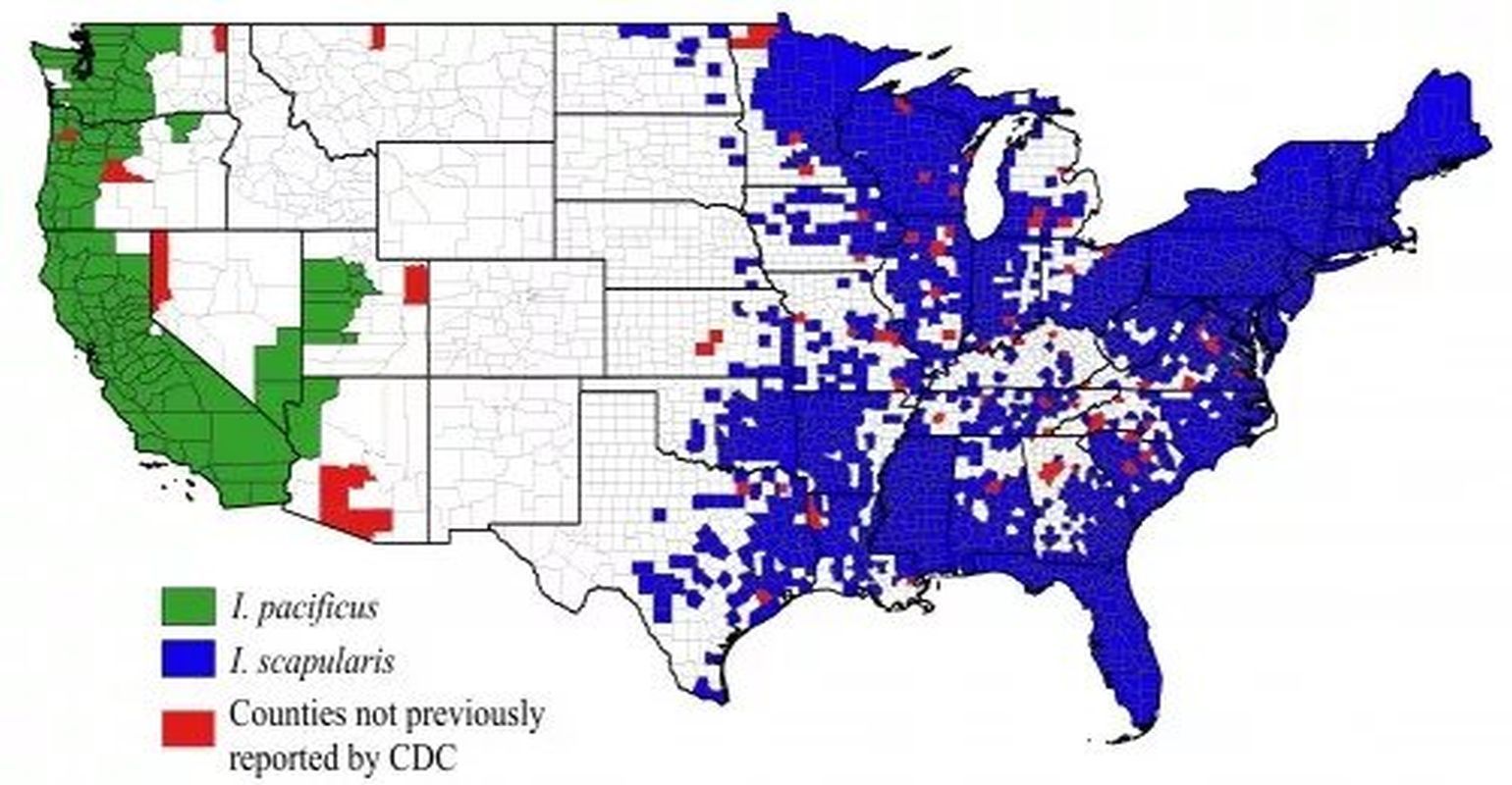Citizen-Scientist Study Results Find Ticks Capable of Carrying Lyme Disease in 83 Additional U.S. Counties

The results of a nationwide citizen scientist study, sponsored by the Bay Area Lyme Foundation and conducted by Northern Arizona University and Colorado State University, found ticks capable of carrying Lyme and other tick-borne diseases in 83 counties throughout the country where they had not previously been recorded.
Published in the peer-review journal PLOS ONE, the study is based on a massive sample of more than 16,000 ticks collected from Puerto Rico and 49 U.S. states-six times the number of submissions than the initial estimate.
“The overwhelming study participation from residents throughout the country and the surprising number of counties impacted demonstrates that great interest and need exist throughout the country for this information,” said lead author Nate Nieto, associate professor in NAU’s Department of Biological Sciences. “This study offers a unique and valuable perspective as it looks at the risk to humans that goes beyond the physician-reported infection rates and involves ticks that were found on or near people.”
One of the fastest growing infectious diseases in the country, Lyme disease is a potentially disabling infection caused by bacteria transmitted through the bite of an infected tick to people and pets. According to statistics released in 2015 by the CDC, there are more than 329,000 new cases of Lyme disease each year. However, many go untreated. Because diagnosing the disease is difficult, as many as one million Americans may be suffering from the impact of its debilitating long-term symptoms and complications.
“Identifying geographic patterns of tick-human contact provides valuable insight that may help public health officials, patients and physicians become more vigilant about Lyme disease symptoms and increase early diagnosis,” said Linda Giampa, executive director at Bay Area Lyme Foundation. “Based on these findings, it is critical that residents throughout the country take precautions and know the symptoms of tick-borne infections, even in areas where ticks have not previously been shown to cause disease.”
Ixodes scapularis (deer tick) or Ixodes pacificus (Western black-legged tick) populations were discovered in 24 U.S. states: Alabama, Arizona, Georgia, Illinois, Indiana, Iowa, Kansas, Kentucky, Louisiana, Michigan, Minnesota, Montana, Missouri, Nevada, North Carolina, Ohio, Oregon, South Carolina, Tennessee, Texas, Utah, Virginia, Washington and Wisconsin.
Because infected ticks had not previously been recorded in these states, many of the public health agencies do not collect the small arachnids, do not have disease risk assessment systems in place and/or do not have tick-borne disease reporting requirements.
Researchers found ticks carrying Babesia, microscopic parasites carried by ticks that cause the disease babesiosis, in 26 counties across 10 states in which the public health department does not require physicians to report cases of babesiosis-a preventable disease if simple steps are taken, but if left untreated can be life-threatening.
Source: Northern Arizona University
Robust infectious disease surveillance, including rapid subtyping of influenza A, is essential for early detection, containment, and public health reporting of novel viral threats.